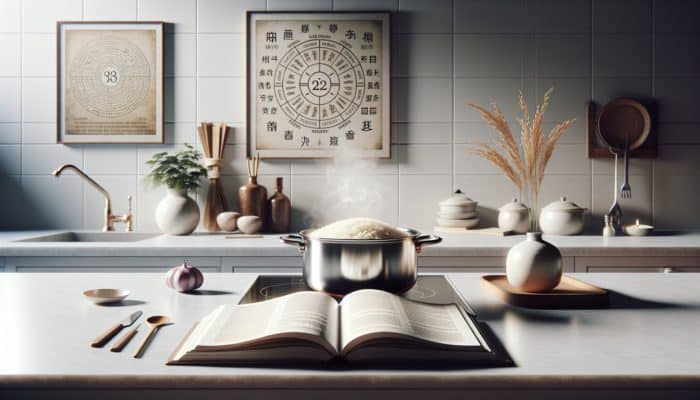Master the Art of Selecting the Perfect Rice for Every Culinary Endeavour
Choosing the appropriate rice is an essential culinary skill that can significantly enhance your cooking abilities, allowing you to prepare rice with ease. With a plethora of rice varieties available, gaining an understanding of the distinct characteristics of each type can transform your meals into exceptional dining experiences that are both satisfying and enjoyable. Each rice variety offers its own set of nutritional advantages and specific cooking techniques, creating a diverse and exciting selection for home cooks. By picking the ideal rice for your dish, you are taking a considerable step towards achieving culinary excellence and tantalising your taste buds.
Explore the Extensive Selection of Rice Varieties and Their Unique Culinary Uses

Many individuals perceive rice as a singular ingredient; however, it actually encompasses a wide array of varieties, each possessing unique attributes and culinary applications. Long-grain rice varieties such as Basmati and Jasmine are cherished for their light and fluffy texture, making them perfect for pilafs, salads, or as a delightful side dish. In contrast, medium-grain rice has a slightly stickier consistency, making it ideal for sushi or creamy risottos. Short-grain rice, prevalent in Asian cuisine, tends to clump together, making it excellent for sushi rolls or rice balls requiring a unified texture.
Aromatic rice types like Basmati and Jasmine are not only renowned for their captivating fragrances but also for their remarkable ability to absorb flavours, elevating any dish they accompany into a fragrant culinary delight. By becoming acquainted with these distinctions, you can make well-informed decisions about which rice to utilise for your specific cooking requirements, thereby enriching your overall gastronomic journey.
Understand the Importance of Grain Length and Its Impact on Cooking Techniques
The length of rice grains is a vital factor that affects cooking duration and the necessary water-to-rice ratio. Long-grain rice generally requires a water-to-rice ratio of two cups of water for every one cup of rice, cooking until it reaches a tender yet fluffy state. In contrast, medium-grain rice may require slightly less water, while short-grain rice often necessitates additional water due to its higher starch content, resulting in a stickier texture that many recipes call for.
Grasping these nuances empowers you to consistently create perfectly cooked rice. For example, when preparing a comforting risotto, using Arborio rice—a short-grain variety—will yield the creamy consistency this dish is famous for. Conversely, a light and fluffy Basmati rice pairs beautifully with pilafs or serves as an elegant side dish, significantly enhancing both the presentation and flavour of your meal.
Enhance Your Culinary Creations with Gourmet and Specialty Rice Varieties
Venturing beyond traditional rice options, gourmet and specialty varieties can dramatically elevate your culinary creations and introduce exciting flavours to your meals. Consider incorporating black rice or red rice into your cooking repertoire; these varieties not only add vibrant colours to your plate but are also packed with antioxidants. Often referred to as “forbidden rice” and “nutty rice,” respectively, they can serve as visually striking bases for salads or side dishes, providing both nutritional benefits and aesthetic appeal.
Do not overlook aromatic rice varieties either. Fragrant options like Jasmine and Basmati can transform your dining experience with their delicate aromas, enhancing the enjoyment of any meal they accompany. By experimenting with these specialty rice options, you can unlock a new dimension of flavours and textures, making your culinary journey more enjoyable and less daunting.
Achieve Perfect Rice Preparation Techniques Every Time

Preparation is a crucial factor in successfully cooking rice, whether you're an experienced chef or a kitchen beginner. Mastering the fundamental techniques of rice preparation guarantees that you can achieve flawless results every time. From rinsing to precise measuring, each step is essential in attaining the fluffy and flavourful rice you desire.
The Essential Rinsing Step for Optimal Rice Cooking Results
Rinsing rice is an important step that many home cooks frequently overlook. This straightforward yet effective technique eliminates excess starch, which can lead to clumping and a gummy texture in the finished product. To start, place your rice in a fine-mesh strainer and rinse it under cold water until the water runs clear. While this process may take a few minutes, the resulting texture is well worth the effort.
Beyond improving texture, rinsing enhances the rice's flavour by removing surface impurities. This step is particularly vital for varieties such as Basmati or Jasmine, where a light and airy texture is desired. For those preparing rice in larger quantities, rinsing becomes even more essential to ensure consistent results across all servings, leading to a more enjoyable dining experience.
Discover the Benefits of Soaking Rice Before Cooking
Soaking rice prior to cooking is a time-honoured practice embraced by cultures around the world, and for good reason. This technique can greatly improve the texture of your rice while also reducing cooking time. Soaking allows the grains to absorb water, leading to a more uniform cooking process. For varieties like Basmati, soaking for a minimum of 30 minutes can produce exceptionally fluffy results.
Moreover, the soaking process helps unlock the rice's natural flavours, making it more aromatic and enjoyable. In cultures where rice is a dietary staple, such as in Indian or Thai cuisines, soaking is a common method that elevates the dish. Consider incorporating soaking into your cooking routine to enhance your meals and alleviate the stress often associated with preparing rice.
Perfect the Art of Accurate Measurement for Rice and Water

Achieving the ideal rice-to-water ratio is an indispensable skill in how to cook rice without stress. While the common guideline suggests using two cups of water for each cup of rice, this can vary based on the specific type of rice you are working with. For instance, sticky rice may need slightly more water, while certain long-grain varieties might require a bit less.
Investing in a reliable measuring cup can significantly impact your cooking, as precision is crucial for success. Many experienced chefs recommend the finger method: after adding the water, place your finger on top of the rice; the water level should reach your first knuckle. This technique helps avoid common pitfalls and ensures perfectly cooked rice without guesswork, enhancing your overall cooking experience.
Choose the Ideal Rice for Specific Culinary Dishes
Understanding the various types of rice and their optimal uses can greatly simplify your cooking process. For instance, if you're preparing a stir-fry, selecting long-grain rice guarantees that the grains remain separate and fluffy. For creamy dishes like risotto, Arborio rice is preferred due to its high starch content, contributing to a rich, creamy texture.
When selecting rice for particular recipes, consider the overall flavour profile and texture you wish to achieve. For example, pairing aromatic Jasmine rice with a spicy curry creates a delightful contrast that enhances your dining experience. The right rice selection can elevate your meals from ordinary to extraordinary, making your cooking journey more enjoyable and less stressful.
Explore Diverse Cooking Methods to Prepare Rice Perfectly
The cooking method you choose for rice significantly influences the final outcome. With a variety of techniques available, understanding which method to employ for different scenarios can save you time and reduce the anxiety often associated with rice preparation.
Classic Stovetop Cooking Techniques for Perfectly Fluffy Rice
Cooking rice on the stovetop remains a traditional method that many rely on due to its simplicity and minimal equipment requirements—a pot with a lid and a heat source are all you need. Begin by rinsing and soaking your rice as desired. Then, add the appropriate amount of water, bringing it to a boil before covering the pot and reducing the heat to maintain a gentle simmer.
Monitoring the cooking time is crucial; for long-grain rice, this typically takes around 15-20 minutes. Avoid lifting the lid too frequently, as this can release steam and negatively impact the cooking process. Once the water is absorbed, allow the rice to rest for a few minutes off the heat before fluffing it with a fork. This classic method allows for hands-on monitoring, reducing the stress associated with rice cooking.
Achieve Consistent Results with a Rice Cooker
Rice cookers have transformed the way many prepare rice, providing a hands-off approach that suits busy lifestyles perfectly. With just a push of a button, you can achieve perfectly cooked rice every time. The key lies in using the correct rice-to-water ratio, which is often indicated on the rice cooker itself.
Many rice cookers also feature functions that allow for steaming vegetables or cooking other grains simultaneously, further simplifying meal preparation. The automatic shut-off feature alleviates the worry of overcooking, enabling you to concentrate on other components of your meal and significantly reducing kitchen-related stress.
Quick and Easy Rice Cooking in the Microwave
If you're short on time, cooking rice in the microwave can be a speedy and effective method. Start by rinsing the rice and placing it in a microwave-safe bowl. Add the appropriate amount of water, ensuring you adhere to the recommended ratios, and cover the bowl with a microwave-safe lid or plate. Microwave on high for approximately 10-12 minutes, checking for doneness and making adjustments as needed.
This technique is particularly advantageous for single servings or when you need rice in a hurry. Microwaving rice can save time and alleviate the stress of cooking, especially when managing multiple tasks in the kitchen.
Essential Tips and Tricks for Perfectly Cooked Rice Every Time
Cooking rice may appear straightforward, yet numerous tips and tricks can enhance your results and make the process more enjoyable. From flavouring techniques to achieving the perfect texture, these insights can turn your rice cooking experience into a culinary triumph.
Prevent Rice from Sticking Together During Cooking
One of the most common challenges faced while cooking rice is its tendency to stick together. To prevent this, thoroughly rinsing the rice before cooking is imperative. Additionally, adding a small amount of oil or butter to the cooking water creates a barrier that keeps the grains separate.
Stirring the rice during the initial cooking stage can also help avoid clumping. When using a rice cooker, be cautious not to overfill the pot, as this can result in sticky rice. By employing these techniques, you can ensure a fluffy, perfectly cooked result every time, boosting your cooking confidence.
Achieve Your Desired Rice Texture with Precision
The texture of rice plays a crucial role in determining the overall success of your dish. To achieve rice that is neither too soft nor too firm, it’s vital to adhere to the recommended cooking times and water ratios specific to the variety you are using.
Allowing the rice to rest after cooking is equally important. This resting period allows steam to settle, resulting in a more consistent texture. Fluffing the rice with a fork before serving will separate the grains, enhancing the overall presentation. Mastering these techniques will make your rice cooking experience both less stressful and incredibly rewarding.
Enhance the Flavour Profile of Your Rice for Culinary Delight
Rice serves as a blank canvas, ready to absorb a multitude of flavours. Simple additions like fresh herbs, spices, or vegetable broth can elevate plain rice into a culinary masterpiece. For instance, cooking rice in coconut milk creates a creamy base that pairs splendidly with tropical dishes.
Experimenting with seasonings such as garlic, onion, or bay leaves added to the cooking water can infuse your rice with enticing aromas. This versatility allows you to customise the flavour of rice to complement any meal, making it a delightful addition to your culinary repertoire and enhancing the overall dining experience.
Avoid Common Pitfalls While Cooking Rice
Steering clear of common mistakes is essential for achieving stress-free rice cooking. Many home cooks encounter similar challenges that can result in unsatisfactory outcomes, but with a few simple tips, you can effectively navigate these common issues.
Prevent Overcooked Rice from Ruining Your Meal
Overcooking rice often results in an undesirable mushy texture. To avoid this, closely monitor cooking times and water ratios. Utilise a kitchen timer to track how long the rice has been cooking, and taste a few grains for doneness a few minutes before the suggested time.
If you find that the water has been fully absorbed but the rice remains firm, add a splash of water, cover it, and allow it to steam for a few more minutes. This technique can help salvage overcooked rice in many instances, ensuring you achieve the ideal texture every time.
Avoid the Frustration of Undercooked Rice
Undercooked rice can be exasperating, especially when you’re eager to enjoy your meal. To avoid this issue, it’s crucial to follow the recommended cooking times and water ratios specific to the type of rice you’re using.
When in doubt, taste a few grains to check their doneness. If you discover your rice is still crunchy, simply add a bit more water, cover, and continue cooking for a few more minutes. This precaution will help ensure that your rice is perfectly tender and enjoyable.
Prevent Incorrect Water Ratios for Perfect Rice Every Time
Using incorrect water ratios can lead to a range of issues, from soggy rice to a dry, uncooked mess. Every type of rice has unique properties and required water ratios, making it crucial to follow specific guidelines for the rice variety selected.
Investing in a reliable measuring cup and adhering to the recommended ratios for long, medium, and short-grain rice is essential. This attention to detail will set you up for success, allowing you to cook rice without the stress of uncertainty while delivering delicious results every time.
Troubleshooting Common Rice Cooking Challenges
Even with the best preparation and cooking methods, issues can still arise when cooking rice. Knowing how to troubleshoot these problems can save your dish and enhance your cooking experience, making it more enjoyable overall.
Salvage Burnt Rice Like a Culinary Expert
If you find yourself with burnt rice, don't despair. The first step is to salvage what you can—carefully transfer any unburned rice to a new pot, leaving the burnt layer behind. To prevent this mishap in the future, always use a pot with a heavy bottom to ensure even heat distribution.
You might also consider adding a splash of water to the burnt rice and covering it for a few minutes, which may help steam and loosen the burnt bits. This approach is a practical way to salvage your meal and minimise waste while allowing you to enjoy your rice without sacrificing quality.
Fixing Issues with Soggy Rice
Soggy rice can be disappointing, but all is not lost. If your rice has absorbed too much water, consider spreading it out on a baking tray and allowing it to dry out for a few minutes in a low oven. This method lets moisture escape, restoring some texture to your rice.
Alternatively, you can transform soggy rice into fried rice by stir-frying it in a pan with fresh vegetables and soy sauce. This creative solution can turn your soggy mishap into a delightful dish, showcasing your resourcefulness in the kitchen while minimising waste.
Revive Cold Rice for a Delicious Meal
Leftover rice can lose its appeal, but reviving it is easier than you might think. One effective method is to sprinkle a few drops of water over the cold rice, then microwave it for a minute or two. The steam generated will help rehydrate the rice, restoring its desired texture.
Alternatively, creating a stir-fry with fresh vegetables, proteins, and a splash of soy sauce can breathe new life into your cold rice. This delicious transformation can elevate what might have been a mundane leftover meal into something exciting and enjoyable.
Easily Address Undercooked Rice Issues
If you discover that your rice is still hard or crunchy after the cooking time, don’t worry. Simply add a small amount of water, cover the pot, and continue cooking for a few more minutes. This technique allows the rice to absorb the additional moisture it needs to cook evenly and thoroughly.
If you're using a rice cooker, the automatic settings may not account for variations in rice type. Checking for doneness occasionally can help you avoid undercooked rice in the future, ensuring a consistently enjoyable meal experience.
Effectively Manage Overcooked Rice Challenges
Overcooked rice can be a challenge, but there are ways to salvage it. If your rice has become mushy, consider repurposing it in soups or as a base for creamy dishes where the texture won’t be as noticeable.
Another clever solution is to create rice pudding—this allows you to transform overcooked rice into a delightful sweet treat. By embracing these creative solutions, you can navigate the challenges of rice cooking with confidence and flair.
Best Practices for Storing and Reheating Rice
Understanding the proper storage and reheating techniques is essential to maintaining the quality of your cooked rice. Whether you're meal prepping or saving leftovers, knowing the best practices will ensure that your rice remains delicious and safe to consume.
Safe Storage Techniques for Cooked Rice
Correctly storing cooked rice is vital to prevent foodborne illnesses. After cooking, allow the rice to cool to room temperature before transferring it to an airtight container. Store the rice in the refrigerator for up to four days, ensuring it remains fresh and safe for consumption.
If you plan to store rice for an extended period, consider freezing it. Spread the cooled rice onto a baking sheet and freeze until solid. Once frozen, transfer the rice to a sealable plastic bag, removing as much air as possible. This method prevents freezer burn and allows you to enjoy cooked rice at your convenience.
Effective Techniques for Reheating Rice
Reheating rice properly is crucial to preserving its original texture and flavour. The microwave is a popular option, but be sure to add a splash of water and cover the bowl to create steam. This technique ensures that your rice remains moist and fluffy during the reheating process.
Alternatively, reheating on the stovetop with a bit of water can also yield excellent results. Simply place the rice in a saucepan, add water as needed, and heat gently while stirring until warmed through. This method provides a more controlled reheating process, helping to maintain the rice's texture and flavour.
Smart Methods for Freezing Cooked Rice
Freezing cooked rice can save time and provide a convenient meal option later on. To freeze effectively, ensure the rice has cooled completely before transferring it to a freezer-safe container. Portioning the rice into individual servings can also make it easier to thaw only what you need at any given time.
When you're ready to use the rice, simply remove it from the freezer and reheat directly from frozen, adding a little water to prevent it from drying out. This technique allows for quick meals on busy days without sacrificing quality or taste, making your cooking experience more enjoyable.
Creative Ways to Incorporate Rice into Your Culinary Creations
Rice is an incredibly versatile ingredient that can shine as both a side dish and a main component in various meals. Exploring different methods to incorporate rice into your cooking can enhance your culinary repertoire and delight your palate.
Rice as a Flavourful Companion to Side Dishes
Rice often serves as an ideal accompaniment to a wide range of dishes, enhancing flavours and providing balance to the overall meal. Whether it’s fragrant Jasmine rice served alongside spicy curries or herbed Basmati rice accompanying grilled meats, the possibilities are truly limitless.
Consider enhancing plain rice by adding sautéed vegetables, fresh herbs, or a squeeze of citrus to elevate its flavour profile. These simple additions can transform your side dish into a vibrant and flavourful element of your meal. Experimenting with different flavour combinations allows you to customise your rice to suit any occasion, making it an exciting part of your culinary adventures.
Make Rice the Star of Your Main Courses
From hearty casseroles to delectable stir-fries, rice often takes centre stage in many beloved dishes worldwide. For example, a traditional Spanish paella showcases rice as the hero ingredient, soaking up the rich flavours of saffron and seafood, resulting in a truly unforgettable dining experience.
In Asian cuisines, fried rice is a popular method to utilise leftover rice, combining it with fresh vegetables and proteins for a satisfying and flavourful meal. The adaptability of rice enables it to complement various ingredients and cooking styles, making it an indispensable component in countless recipes, enhancing the overall enjoyment of your meals.
Addressing Common Questions About Rice Cooking
What type of rice is best suited for making sushi?
Short-grain rice, particularly varieties like Japonica, is ideal for sushi because its high starch content makes it sticky and easier to shape into rolls.
Can rice be cooked in a slow cooker?
Yes, rice can be cooked in a slow cooker. Simply add the appropriate water ratio, cover, and allow it to cook on low for about 2-3 hours until tender.
Is soaking rice before cooking necessary?
Soaking rice is not always essential, but it can enhance texture and reduce cooking time, especially for long-grain varieties that benefit from this method.
How can I prevent rice from boiling over during cooking?
To prevent boiling over, ensure you use a pot that is large enough for the amount of rice and water, and maintain the heat at medium to avoid rapid boiling.
Is it safe to reheat leftover rice?
Yes, leftover rice can be safely reheated. Make sure it is heated thoroughly to kill any bacteria, adding moisture as needed to prevent it from drying out.
What’s the best way to store leftover rice?
Leftover rice should be stored in an airtight container in the refrigerator for up to four days or frozen for longer storage, allowing for convenient future meals.
How much water is needed for cooking brown rice?
Typically, brown rice requires a water-to-rice ratio of about 2.5:1, and it generally takes longer to cook compared to white rice varieties.
Can I add spices to the cooking water for extra flavour?
Absolutely! Adding spices or herbs to the cooking water can infuse the rice with additional flavour, greatly enhancing the overall dish.
What should I do if my rice is undercooked?
If your rice is undercooked, add a bit more water, cover the pot, and continue cooking until the grains are tender and fully cooked.
Why does my rice turn out sticky after cooking?
Rice can become sticky if it’s overcooked or if the wrong type of rice is used. Rinsing the rice before cooking can also help reduce stickiness, ensuring a better texture.
Stay connected with our latest news and tips on Facebook!
The post How to Cook Rice Without Stress: A Simple Guide appeared first on https://cookinggods.com
The Article Cook Rice Stress-Free: Your Simple Guide to Success Was Found On https://limitsofstrategy.com

